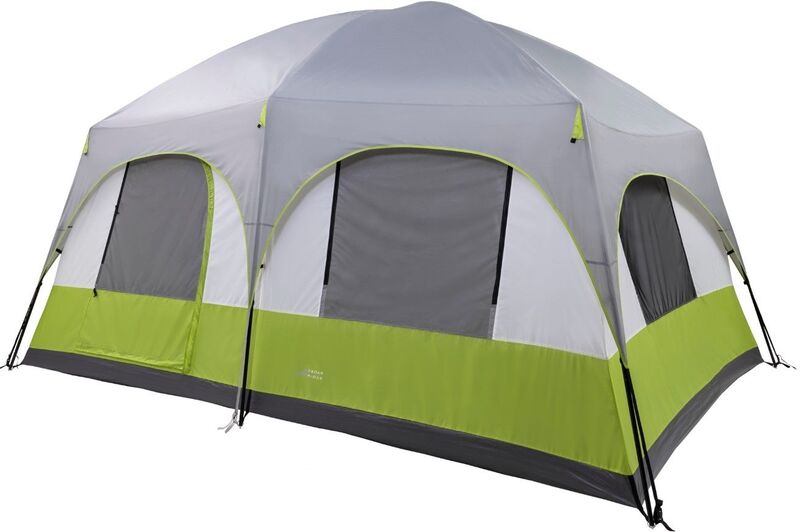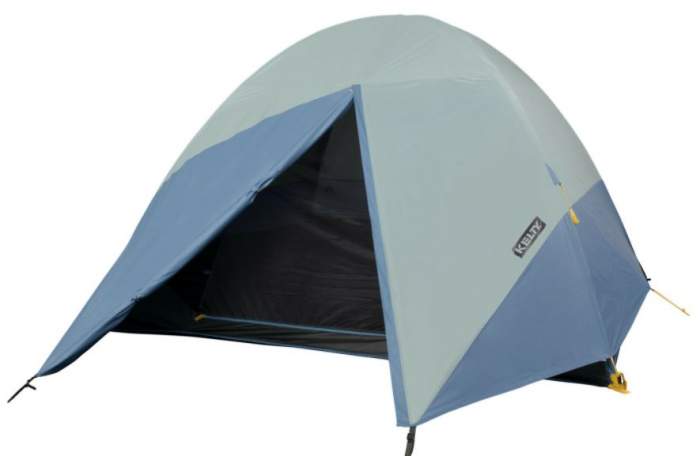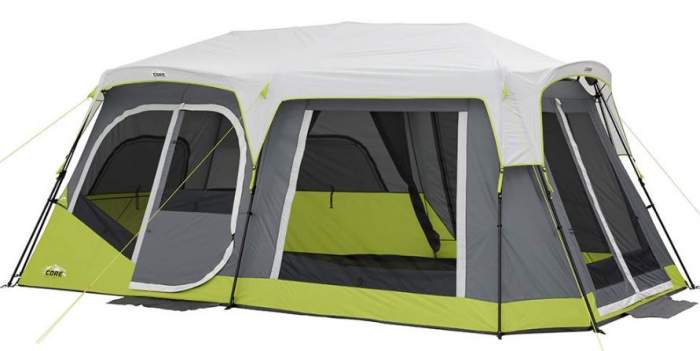When you are in a camping place, it is usually easy to distinguish cabin style and dome style tents. This external shape difference is behind some important inner functional differences that are discussed here.
If you are a beginner in camping, you will want to know that when it comes to selecting a family camping tent, there’s more to consider than just the number of sleepers it can accommodate.
Two popular options that campers often encounter, in particular on the US market, are those discussed here in the text, i.e., cabin-style and dome-style tents. Both serve the purpose of providing shelter during outdoor adventures.
But they differ significantly in design, features, and suitability for various camping scenarios.
The main general differences between the cabin-style tents and dome-style tents are the following:
- Inner volume and headroom.
- Comfort and livability.
- Protection.
- Area.
These differences will become more clear when you see the most important features of these two types, they are discussed below. So, let’s delve into these family camping tents to help you make an informed decision for your next camping trip.
Cabin-Style Tents: Roomy Comfort
Cabin-style tents are easily recognizable by their vertical walls and rectangular and boxy shape, which creates a cabin-like interior space. These tents are characterized by their generous headroom, offering a more spacious and comfortable living area.
The example below is the Cedar Ridge Ironwood Two Room Tent with no less than 7.35 ft (224 cm) peak height.

Families appreciate cabin-style tents for their ability to mimic a small home, providing ample space for moving around and setting up sleeping areas, camping gear, and even small furniture.
Key Features of Cabin-Style Tents Include the Following:
- Steep or even Vertical Walls: Cabin-style tents are designed with straight, steep, and sometimes vertical walls, maximizing the interior space and making it easier to stand upright throughout the tent.
- Multiple Rooms: Many cabin-style tents feature dividers that allow you to create separate rooms or sections, providing privacy for family members or creating designated spaces for sleeping and storage. The CORE Two Room 12 Person Instant Cabin Tent with Side Entrance shown below has two of them, but there are tents with more rooms on the market.
CORE Two Room 12 Person Instant Cabin Tent with Side Entrance. - Headroom: The steep walls of cabin tents translate to increased headroom, making changing clothes and moving around the tent more comfortable.
- Windows and Ventilation: These tents often have large windows and improved ventilation systems, making them suitable for warmer weather camping. The examples shown above clearly demonstrate this.
- Ease of Access: Cabin tents frequently come with multiple doors for easy entry and exit, reducing the need to climb over fellow campers. The mentioned vertical walls and generous headroom also imply vertical and large doors, and this itself adds to ease of access.
Dome-Style Tents: Versatile and Wind-Resistant
Dome-style tents, as the name suggests, feature a dome-like shape created by crisscrossing flexible poles. This design enhances their stability, making them a popular choice for windy conditions. One great example is in the picture:

Dome tents are versatile and come in various sizes, making them suitable for solo campers, couples, and families alike.
Key Features of Dome-Style Tents:
- Stability: The curved design of dome tents helps them withstand strong winds and shed rain or snow more effectively, making them suitable for a wider range of weather conditions.
- Simple Setup: Dome tents are known for their straightforward setup, usually involving fewer poles and a lighter overall weight.
- Compactness: Due to their design, dome tents tend to pack down smaller and are often favored by backpackers and those with limited storage space.
- Single Room Design: Dome tents typically offer a single interior space without the dividers and room separations found in cabin tents. But it is fair to say that there are indeed dome type tents with dividers, this holds in particular for extended dome style tents.
- Weight: Dome tents are often lighter than cabin tents of similar size, making them more manageable for longer hikes or camping trips.
A few more words about the most important differences mentioned above
Inner volume and headroom
This is related to the walls and canopy. Even if the two types have the same base area, you will always have far more volume in a cabin type tent than in a dome tent.
A dome tent can have a stand-up height in the central area, but the canopy is such that you do not have plenty of volume. Sometimes these tents come with pre-bent sections of roof poles, but quite generally, they are inferior to cabin-style tents regarding the headroom.
Comfort and livability
This is very much related to the previous issue, but there are more factors that contribute to the comfort of a tent. In cabin style tents you may have wall organizers, media panels and media pouches, great windows with views around, better ventilation because of the mentioned windows, etc.
But many cabin type tents are with a minimal fly, so they do not provide vestibules for storage. However, some of them may come with closets and cabinets and also with a porch that is at least partly protected.
Quite generally, cabin-type tents are more pleasant and comfortable than dome style tents.
Usage and protection
This is one aspect where dome tents may be far superior. You have them built for all seasons and all climates.
They are generally far more aerodynamic than boxy cabin-type tents. So if you know you will be in windy places, do not even think of using a cabin tent with a partial coverage fly. In such situations you need a tent with a full coverage fly and a smooth profile, and this is a dome tent in most cases.
Cabin type tents are most suitable for calm weather without much wind, for a milder climate, and for areas without much rain. This does not mean that every dome tent will protect you better from the rain than any cabin type tent. There are cabin tents with full fly as well, the picture below shows my own Snow Peak Alpha Breeze tent used in the Alps recently.

Area
Dome tents are typically with a smaller area than cabin tents. The largest of them are usually up to 6-person capacity, but there are a few 8-person simple dome tents on the market.
Of course, the so-called extended dome tents can be much larger, and they are comparable in size with cabin style tents.
Final thoughts
So the differences between cabin-style and dome-style family tents presented here are for the majority of them, but there are always exceptions as you surely know. This is why it is always important to check the features of a tent very carefully.
Ultimately, the choice between a cabin-style and dome-style family tent depends on your camping preferences and needs. If you value comfort, space, and the ability to stand upright, a cabin-style tent might be the right choice for you. On the other hand, if you’re looking for versatility, wind resistance, and easy setup, a typical dome-style tent could be more suitable.
Consider factors such as the size of your family, the weather conditions you’re likely to encounter, the amount of gear you’ll bring, and the ease of transportation.
Cabin type tents are usually heavier because of their steel poles and polyethylene which is frequently used for their floors. But this is a strong and thick material, and it is fully waterproof. You can have it in dome type tents, but these tents are more available with polyester used for the floor.
Whichever style you choose, investing in a quality tent that suits your family’s camping style will ensure a more enjoyable and comfortable outdoor experience.
For more texts of this type please check in the section Frequently Asked Questions. Read also my text about tents suitable for camping with young children.
Thank you for reading. Let me know if you have questions, there is a comment box below.

Leave a Reply